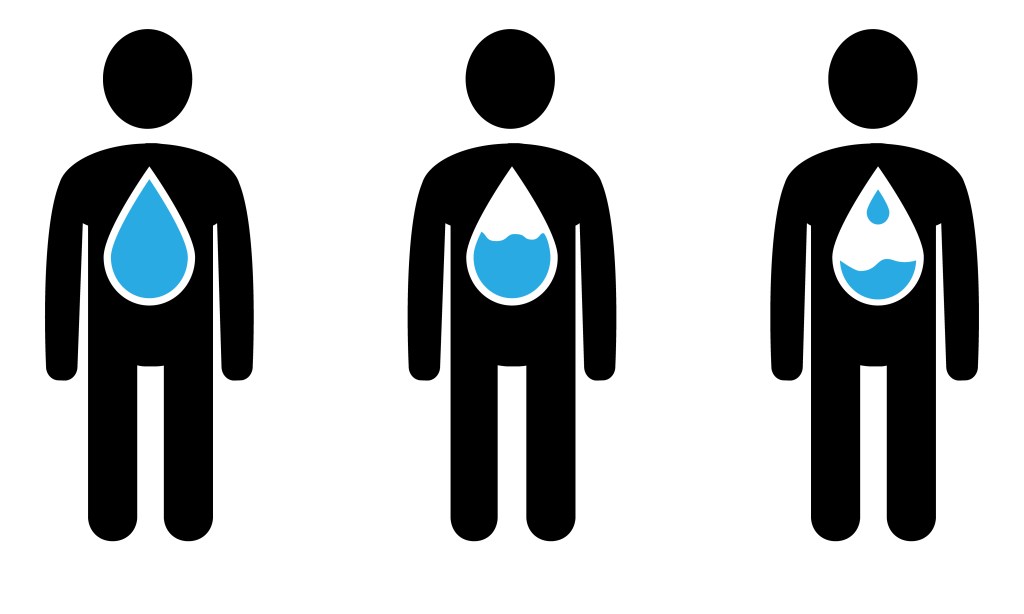At a glance
You can drink water while fasting, as it contains no calories and helps maintain hydration, kidney function, and toxin elimination. During fasting, glycogen depletion can lead to fluid and mineral loss, making electrolytes such as sodium, potassium, and magnesium essential for maintaining balance. Proper hydration supports energy, prevents fatigue, and helps sustain overall well-being throughout various fasting approaches.
Fasting has many health benefits and has helped countless people achieve a healthy body weight, lower blood pressure, and enhance brain functions.
It’s clear that fasting involves abstinence from solid food, but can you drink water while fasting?
Learn why drinking the right fluids is essential while fasting and how adding sea salt to your water during your eating window can help you get the most out of your fasting practice.
Can you drink water while fasting?
Yes, you can drink water during a fast. Plain water doesn’t contain calories and won’t impact blood sugar levels, making it safe to drink while fasting.
In fact, drinking water during fasting periods is essential to maintaining healthy fluid levels, supporting normal kidney function, and flushing out toxins.
However, plain water isn’t all your body needs during fasting. When you restrict caloric intake to promote fat burning, a process called metabolic switching, your liver triggers glycogen shedding, which can cause fluid loss and electrolyte imbalances.
Glycogen shedding refers to the depletion of glycogen, a form of glucose bound to water that’s stored in muscles and the liver. During fasting periods, glycogen is metabolized, which releases large quantities of water.
When your kidneys eliminate excess fluids, they also excrete essential electrolytes such as sodium, potassium, magnesium, and calcium.
Electrolytes are crucial for maintaining fluid balance, promoting normal muscle and cellular functions, and supporting energy production.
Dehydration and electrolyte imbalances are among the most common causes of fasting-related fatigue, headaches, and muscle cramps.
Here are three different types of fasting and what steps you can take to stay hydrated.
Intermittent fasting
Many people practice intermittent fasting, a popular mealtime schedule that alternates between fasting periods and time-restricted eating windows.
A 16:8 fast, characterized by 16 hours of fasting followed by eight hours of eating, is one of the most common intermittent fasting schedules and a widespread weight loss practice.
Staying hydrated during fasting is essential. Without enough water and minerals, you may experience fatigue, dizziness, or light-headedness.
To stay hydrated and promote balanced electrolyte levels, drink around eight cups (two liters) of water daily, and add small amounts of sea salt, an excellent source of sodium and trace minerals.
In addition, during your eating window, focus on electrolyte-rich foods such as leafy green vegetables, avocados, sea salt, nuts, and seeds to help maintain mineral balance.
You can also make your own natural electrolyte drink using whole food ingredients such as lemon juice, apple cider vinegar, berries, avocado, a pinch of Himalayan sea salt, and water. This drink is excellent for sipping after you break your fast to help replenish essential minerals.
Watch the video below to learn how to stay hydrated while fasting.
Prolonged fasting
Prolonged fasting refers to fasting periods that are typically longer than 24 hours.
Research published in PLOS One found that prolonged fasting can enhance brain function, lower the risk of age-related neurodegenerative disease, increase human growth hormone levels and red blood cell count, and promote a healthy body mass index.1
However, prolonged fasting without adequate fluid intake can cause hyper-concentrated urine and increase the risk of kidney stones.
“I typically recommend drinking between 2 to 3 liters (8 to 12 cups) of water per day during prolonged fasts,” says Dr. Berg. ” Add one to two teaspoons of sea salt to your water, and during your eating window, be sure to include electrolyte-rich foods to help maintain your energy levels.”
Fasting before medical procedures
Fasting for a blood test or medical procedure isn’t the same as prolonged or intermittent fasting and may require you to abstain from food and drinks, including water.
While most fasting blood tests, such as a basic metabolic panel, permit water intake, other tests, such as a renal function panel or cholesterol test, may require you to limit or avoid water intake for 8 to 12 hours before the blood test.
Surgeries or other medical procedures often require dry fasting to ensure that you have an empty stomach, which lowers the risk of nausea, regurgitation, or vomiting.
It’s important to remember that different blood tests and medical procedures have different fasting protocols, and it’s recommended to always check with your healthcare provider about specific guidelines for water intake.

Is it safe to do dry fasting?
Dry fasting is a form of fasting that involves abstaining from both food and water. Compared to water fasting, dry fasting has no additional metabolic benefits and may increase your risk of adverse health effects.
Depriving the body of water for an extended period can result in severe dehydration, electrolyte imbalances, kidney problems, and nutritional deficiencies.
A study published in Sports Medicine found that a body water deficit of more than two percent can reduce blood flow to the brain and skeletal muscles, raise blood pressure, and impair tissue oxygenation.2

How much water should I drink while fasting?
How much water you should drink while fasting depends on your overall health, activity levels, climate, and duration of your fast.
In general, aim to drink around eight cups of water daily during intermittent fasting. Longer fasts may require closer to 8 to 12 cups per day to stay hydrated.
To support fluid balance, consider adding a small amount of sea salt to your water throughout the day. In addition, prioritizing foods naturally rich in electrolytes during your eating window is an excellent strategy to replenish key minerals.

Best drinks to have while fasting
Fasting involves limiting your caloric intake, but that doesn’t mean plain water is the only beverage you can drink.
There are plenty of calorie-free drinks that you can enjoy during your fasting window:
- Herbal tea
- Black and green tea
- Black coffee
- Unsweetened flavored seltzer water
- Sparkling water
- Lemon water
Lemons support healthy kidney function, and drinking lemon water is essential when fasting. Lemons are a rich source of citric acid, a natural acid that prevents oxalates from forming calcium oxalate crystals, the leading cause of kidney stones.
Although not calorie-free, bulletproof coffee doesn’t break a fast and can help extend fasting periods. It’s carb-free and won’t raise blood sugar and insulin levels, making it a popular drink for people on a keto diet and those who practice intermittent fasting.
Key takeaways
- Drinking water during fasting helps keep the body hydrated, supports healthy kidney function, and aids in flushing out toxins.
- Replenishing minerals with sea salt, avocado, and leafy greens helps prevent dehydration and supports steady energy throughout fasting periods.
- It’s recommended to drink between 8 and 12 cups of water daily, add sea salt to your water, and eat mineral-rich whole foods to help prevent fatigue and muscle discomfort during fasting.
FAQ
1. Is water allowed while doing intermittent fasting?
Water is allowed and recommended during intermittent fasting. Drinking around eight cups (two liters) of water daily helps stay hydrated, lowers the risk of kidney stones, and supports the normal functioning of cells and tissues.
2. Is it okay to drink water while fasting?
It’s vital to consume plenty of water while fasting to avoid dehydration, fatigue, kidney problems, and high blood pressure.
Dry fasting doesn’t provide additional metabolic benefits to water fasting and can increase your risk of severe dehydration, electrolyte loss, impaired muscle function, and lack of tissue oxygenation.
3. What liquids can you drink while fasting?
Zero-calorie drinks such as plain water, herbal teas, unsweetened flavored seltzer water, and lemon water are excellent choices for staying hydrated while fasting.
Black coffee and green and black teas are also safe while fasting. However, it’s important to remember that these beverages contain caffeine, and it’s best to avoid large amounts to minimize caffeine’s side effects.
4. Can I drink water before a blood test?
Yes, you can typically drink water before a blood test. In fact, it’s often recommended to stay well-hydrated before a blood test to ensure accurate results.
However, specific blood tests may require you to abstain from all foods and drinks, including water, and it’s best to check with your healthcare provider about water intake instructions before a blood test.
5. What happens if you accidentally drink water while fasting for a blood test?
If you accidentally drink water before a blood test, it’s crucial to inform your doctor or phlebotomist. While most blood tests don’t require dry fasting, some specific blood tests may be less accurate if you consume water.
6. Does fasting mean no water?
No, fasting doesn’t mean no water.
Fasting refers to limiting caloric intake by abstaining from food and calorie-containing beverages. Water has no calories and won’t interfere with your fast. In fact, drinking plenty of water is essential to avoid dehydration, fatigue, and muscle cramps while fasting.
7. Does lemon water break a fast?
Lemon water doesn’t break a fast and is an excellent choice to lower your risk of dehydration, hyper-concentrated urine, and kidney stones.
Lemons contain citric acid, a natural acid that binds to oxalates and prevents the formation of calcium oxalate, the most common type of kidney stone.
8. Is it safe to fast without drinking water?
Dry fasting isn’t considered safe and can lead to severe dehydration, kidney stones, impaired tissue oxygenation and muscle functions, electrolyte imbalances, and nutrient deficiencies.








